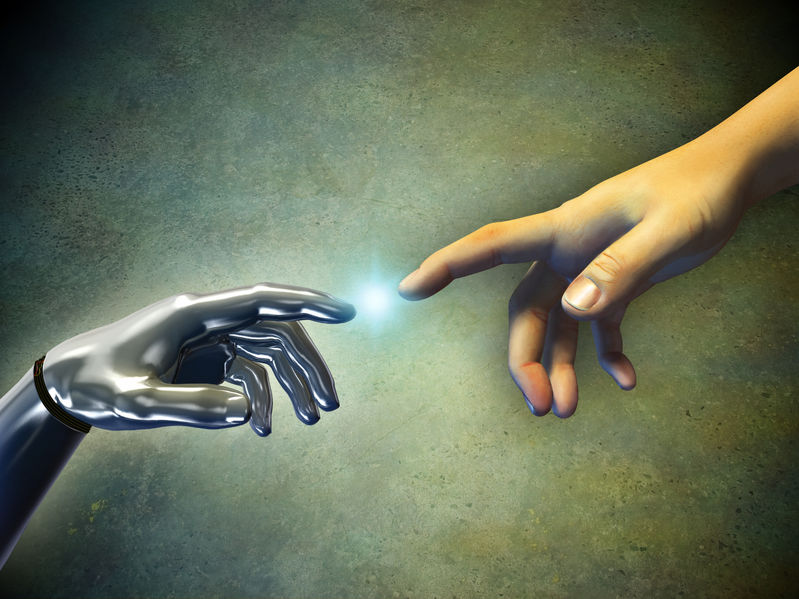Harnessing the potential of artificial intelligence and machine learning
By Aan Chauhan June 5, 2017
- Advances in these technologies will help change the way employees work in the future
- AI and ML are primarily designed to help employees get better at what they do

ARTIFICIAL intelligence (AI) and machine learning (ML) have rapidly matured over the years and are already the norm in many fields, helping companies deploy smart systems of engagement to improve efficiency, enhance security, gain insights, and deliver superior customer experiences.
AI and ML are expected to completely redefine operations ― across the front-, middle- and back-office ― creating new opportunities to bolster competitive advantage.
Fast becoming mainstream throughout the automation and analytics spectrum, AI and ML are already being used across industries for diverse purposes, ranging from robo-advice in financial services (robo-advisers already have more than US$50 billion in assets under management today), sales forecasting in retail, and supply chain optimization in logistics, to robotic process automation and even medical image analysis.
While the ability to learn from data and make predictions, explanations, detect anomalies and make recommendations throws up substantial opportunities to unlock value, organisations are often not sure about where and how to embark upon their AI and ML journey.
The “Do, Think, Learn” continuum
To begin with, businesses should focus on the “Do, Think, Learn” continuum to identify the types of systems that need to be deployed.
Systems that “do” ― so you don’t have to ― replicate repetitive, rules-based human actions. Systems that “think” can operate more dynamically, even in situations with variances, so that you can make decisions autonomously.
Systems that “learn” have the capability to adapt and make optimal adjustments when variables change, enabling a rich partnership between humans and software.
Over time, organisations should transition from systems that “do” to systems that “think” and “learn”.
AI and ML: Threat or opportunity?
Changes in the marketplace are beginning to disrupt business models, change business processes, and create new competition from outside the industry, while opening up new markets for companies to capture.
While there is a degree of uncertainty that organisations and employees face regarding what to do when machines do everything, it should not inhibit companies and senior management from adopting these technologies.
AI and ML are creating new opportunities for empowering organisations to think creatively, problem solve, prioritise and interact with clients and partners better, and help improve employee productivity.
Advances in these technologies will help change the way employees work in the future, creating new roles, perspectives and interfaces that enable superior collaboration.
Embracing AI and ML
In adopting AI and ML to future-proof themselves, businesses should carefully assess implementation opportunities — those with a short-term horizon that can give a quick return on investment (ROI), medium-term projects that are transformational in nature, and long-term moon-shot goals where AI and ML play a core role.
Businesses should also arm themselves with strategies to address potential limitations of machine learning, such as the presence of data in silos, limited availability of deep data analytics skills, varying accuracies of algorithms, and the dizzying speed of change.
It must be remembered that an overreliance on these technologies or a misunderstanding of their abilities could have significant consequences, especially since machine learning-based applications might not be able to fully comprehend peculiarities of human nature and culture right at the outset.
The human angle
AI and ML are primarily designed to help employees get better at what they do, and not as a tool to replace people. Senior management should start analysing what employees like and dislike, use that data to build better talent, and enable new human-to-machine workflows on a case by case basis.
Making the most of AI and ML is about creating an environment for human-centric practices such as design thinking, strategic thinking, sociology, and ethnography to work in tandem with digital skills. Technology will continue to change at an ever more rapid pace. Therefore, in addition to core business and delivery roles, businesses should accord stronger mandates to R&D, change management and governance as well.
Alongside, businesses should focus on developing, honing and capitalising on the capabilities that are uniquely human and cannot be replicated today by automated software. They should create new skills and roles within the organisation focused on the successful adoption of AI and ML across cognitive computing technologies, data sciences, and natural interfaces. They should also develop organisational change management processes and drive a cultural shift towards being receptive to these technologies.
Leveraging AI and ML is about understanding the algorithmic business (a business built around the industrialised use of complex mathematical algorithms for competitive differentiation) and translating it into data science. By tapping into the strengths of both man and machine, businesses can achieve higher productivity and superior business results.
Aan Chauhan is chief technology officer at Cognizant
Related Stories:
GTC 2017: Nvidia heralds the age of AI
Looking to machine learning for solutions
Accenture's positive stance on tech progression
Gartner: Living in the age of AI
For more technology news and the latest updates, follow us on Facebook,Twitter or LinkedIn.


